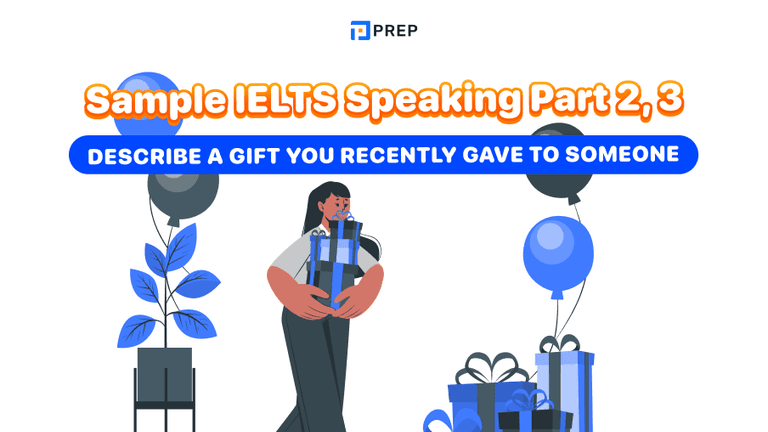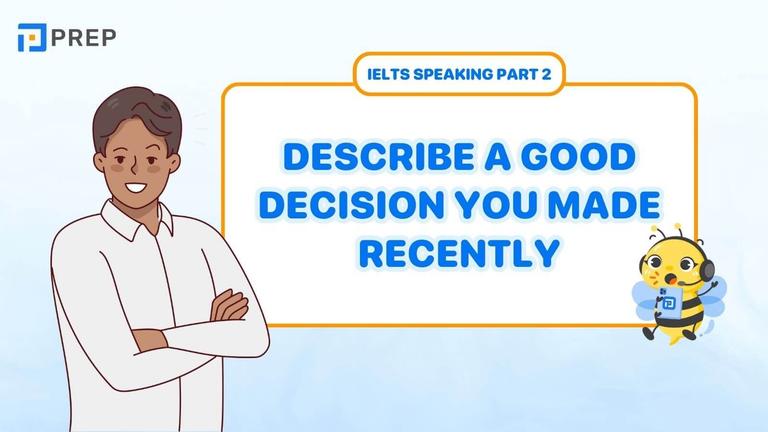How to Say With in Chinese: 跟, 和, 与 Explained Clearly
The Chinese language offers three main ways to express "with": 跟 (gēn) for casual speech, 和 (hé) for neutral contexts, and 与 (yǔ) for formal writing. This comprehensive guide covers grammar patterns, usage rules, and practical examples to help you choose the right option in every situation.
I. How to Say With in Chinese: Core Translations
Understanding how to say "with" in Chinese is essential for natural communication, as this concept appears in virtually every conversation—from discussing relationships and activities to expressing cooperation and accompaniment. Unlike English, which uses one versatile word, Chinese offers three distinct options that vary by formality and context.
Chinese provides three primary ways to express "with":
- 跟 (gēn) — Casual and conversational
- 和 (hé) — Neutral and versatile
- 与 (yǔ) — Formal and written
Each word serves specific communication contexts that native speakers instinctively recognize. Using 跟 (gēn) in a business email sounds overly casual, while 与 (yǔ) in everyday conversation appears unnecessarily formal. Mastering these distinctions immediately improves your Chinese fluency and helps you sound natural in different social situations.
1. 跟 (gēn) - Casual and Spoken "With"
The character 跟 is pronounced gēn with a high, flat first tone. The sound is similar to "gun" in English but with a purer vowel sound and consistent high pitch throughout. Practice saying it with your voice at an elevated level without rising or falling.
跟 (gēn) is the go-to choice for casual, everyday Chinese conversations. Native speakers naturally reach for this word when talking with friends, family members, or in relaxed social settings. It creates a warm, approachable tone that's perfect for informal interactions.
Basic Structure: A + 跟 + B + Verb Pattern
The most common pattern places 跟 between the subject and the person/object they're "with":
- 我跟朋友去看电影 (Wǒ gēn péngyǒu qù kàn diànyǐng) — I'm going to watch a movie with friends
- 他跟女朋友吃饭 (Tā gēn nǚpéngyǒu chīfàn) — He's eating with his girlfriend
- 孩子跟妈妈聊天 (Háizi gēn māma liáotiān) — The child is chatting with mom
When to Use: Daily Conversations and Texting
- Text messages: 跟你说件事 (Let me tell you something)
- Phone calls: 我跟你谈谈 (I'll talk with you)
- Social gatherings: 跟大家一起玩 (play with everyone)
- Family interactions: 跟爸爸讨论 (discuss with dad)
This casual tone makes 跟 perfect for building rapport and maintaining friendly relationships in Chinese communication.
2. 和 (hé) - Neutral and Versatile "With"
The character 和 is pronounced hé with a rising second tone, similar to asking "what?" in English. Your voice should start at a mid-level pitch and rise smoothly upward. This rising intonation gives the word a balanced, neutral quality that matches its versatile usage.
和 (hé) serves as the most versatile option for expressing "with" in Chinese. It works equally well in written documents and spoken conversations, making it the safest choice when you're unsure about formality levels. This flexibility makes 和 the most frequently encountered "with" word across different contexts.
Structure Patterns and Word Combinations
和 follows similar patterns to 跟 but appears more commonly in structured expressions:
- 我和同事开会 (Wǒ hé tóngshì kāihuì) — I'm meeting with colleagues
- 学生和老师讨论 (Xuéshēng hé lǎoshī tǎolùn) — Students discuss with the teacher
- 公司和客户合作 (Gōngsī hé kèhù hézuò) — The company cooperates with clients
Additional Patterns:
- 和...一起 (hé...yīqǐ) — together with
- 和...有关 (hé...yǒuguān) — related to/connected with
- 和...比较 (hé...bǐjiào) — compared with
Formality Level: Neutral and Widely Accepted
和 (hé) occupies the middle ground between casual 跟 and formal 与. This neutral positioning makes it appropriate for:
- Business communications: 和合作伙伴会面 (meet with business partners)
- Academic contexts: 和教授研究 (research with the professor)
- News reports: 政府和民众对话 (government dialogue with citizens)
- Everyday writing: 和朋友的约会 (appointment with friends)
Its widespread acceptance across contexts makes 和 an excellent default choice for learners building confidence in Chinese communication.
3. 与 (yǔ) - Formal and Written "With"
The character 与 is pronounced yǔ with a falling-rising third tone. Start at a mid-level pitch, drop down, then rise back up—like saying "oh" when you suddenly understand something. This dipping tone pattern gives 与 a more deliberate, formal sound quality.
与 (yǔ) appears primarily in formal written Chinese, including newspapers, official documents, academic papers, and business correspondence. It creates a sophisticated, professional tone that signals serious or official communication contexts.
Formal Examples:
- 政府与企业合作 (Zhèngfǔ yǔ qǐyè hézuò) — Government cooperates with enterprises
- 与客户签订合同 (Yǔ kèhù qiāndìng hétóng) — Sign contracts with clients
- 公司与投资者会谈 (Gōngsī yǔ tóuzīzhě huìtán) — Company meets with investors
- 研究与实践相结合 (Yánjiū yǔ shíjiàn xiāng jiéhé) — Research combined with practice
HSK Level: Appears in HSK 4-6 Materials
与 becomes important for intermediate to advanced Chinese learners:
- HSK 4-5: Recognition in reading passages and formal contexts
- HSK 6: Active usage in writing tasks and complex sentence structures
- Academic Chinese: Essential for university-level Chinese studies
- Business Chinese: Required for professional communication
When NOT to Use: Casual Conversation
Avoid 与 (yǔ) in these situations:
- Daily chats with friends: Sounds overly formal and distant
- Text messages: Creates unnecessary formality
- Family conversations: Too stiff for intimate relationships
- Casual social media: Appears pretentious in informal posts
Using 与 in casual contexts can make you sound like you're reading from a newspaper rather than having a natural conversation. Save this formal option for appropriate written and professional contexts where its sophisticated tone enhances your communication.
II. Grammar Patterns and Sentence Structures
Learning how to say “with” in Chinese is not just about knowing the words 跟 (gēn), 和 (hé), and 与 (yǔ). To use them fluently, you also need to understand the grammar patterns where they naturally appear. Below are the most common sentence structures, ranging from beginner-friendly to advanced.
Basic Sentence Patterns with "With"
The following table shows three common ways to use 跟, 和, or 与 in basic sentences:
|
Pattern |
Structure |
Example (Chinese) |
Pinyin |
English Translation |
|
1 |
Subject + 跟/和/与 + Object + Verb |
我跟朋友去商店 |
wǒ gēn péngyǒu qù shāngdiàn |
I go to the store with my friend |
|
2 |
Subject + Verb + 跟/和/与 + Object |
她说话和老师 |
tā shuōhuà hé lǎoshī |
She talks with the teacher |
|
3 |
跟/和/与…一起 (together with) |
我跟他一起学习 |
wǒ gēn tā yīqǐ xuéxí |
I study together with |
Key points:
- 跟 is preferred in casual speech.
- 和 is neutral and works in both speech and writing.
- 与 is formal and common in written texts.
Advanced Grammar Structures with "With"
At higher levels, “with” often appears in more complex structures. Here are some important patterns:
|
Structure |
Example (Chinese) |
Pinyin |
English Translation |
Notes |
|
跟…比较 (compare with) |
这个问题跟昨天的比较复杂 |
zhège wèntí gēn zuótiān de bǐjiào fùzá |
This problem is more complex compared with yesterday’s |
Used for comparisons |
|
和…有关 (related to) |
这个工作和电脑有关 |
zhège gōngzuò hé diànnǎo yǒuguān |
This job is related to computers |
Common in writing and speech |
|
与…相比 (compared with) |
与去年相比,成绩提高了很多 |
yǔ qùnián xiāngbǐ, chéngjì tígāo le hěn duō |
Compared with last year, the grades improved a lot |
Formal register, often in news or reports |
|
与…合作 (to cooperate with) |
公司与外国企业合作 |
gōngsī yǔ wàiguó qǐyè hézuò |
The company cooperates with foreign firms |
Formal and professional contexts |
Common Mistakes and How to Fix Them
- Using 跟 in formal writing:
Wrong: 他跟公司签合同 (tā gēn gōngsī qiān hétóng).
Better: 他与公司签合同 (tā yǔ gōngsī qiān hétóng). - Forgetting 一起 when needed:
Wrong: 我跟朋友去旅行 (wǒ gēn péngyǒu qù lǚxíng).
Correct: 我跟朋友一起去旅行 (wǒ gēn péngyǒu yīqǐ qù lǚxíng) – emphasizes “together.” - Mixing 和 with 和…and (list usage):
Remember: 和 can mean both “with” and “and,” so context is important.
III. Use in practice and HSK exam
Mastering how to say “with” in Chinese is not only important for daily conversations but also highly relevant for the HSK exam. Each of the three forms—跟 (gēn), 和 (hé), and 与 (yǔ)—appears in different contexts, and knowing when to use them will improve both your fluency and exam performance.
Everyday Communication
In daily life, 跟 and 和 are the most common choices.
- Casual speech: 跟 is often used when talking with friends.
Example: 我跟你去超市 (wǒ gēn nǐ qù chāoshì) – I’ll go to the supermarket with you. - Neutral use: 和 works in both speech and writing.
Example: 我喜欢和你聊天 (wǒ xǐhuān hé nǐ liáotiān) – I like chatting with you. - Tip: Adding 一起 (yīqǐ) highlights the sense of doing something together.
Formal and Professional Contexts
In academic or professional situations, 与 is preferred.
- Contracts and agreements: 他与公司签订合同 (tā yǔ gōngsī qiāndìng hétóng) – He signed a contract with the company.
- News and reports: 与去年相比,出口增长了百分之十 (yǔ qùnián xiāngbǐ, chūkǒu zēngzhǎng le bǎifēnzhī shí) – Compared with last year, exports increased by 10%.
- Using 与 instead of 和/跟 creates a more formal tone suitable for business or academic writing.
Relevance in the HSK Exam
- HSK 1–2: Students encounter basic patterns with 和 (hé) to mean “and/with.”
Example: 我喜欢和朋友去公园 (wǒ xǐhuān hé péngyǒu qù gōngyuán) – I like going to the park with friends. - HSK 3: 跟 (gēn) appears frequently in listening and reading passages.
Example: 他跟老师一起学习 (tā gēn lǎoshī yīqǐ xuéxí) – He studies with the teacher. - HSK 4–6: 与 (yǔ) becomes more common, especially in reading comprehension and writing tasks.
Example: 公司与政府合作 (gōngsī yǔ zhèngfǔ hézuò) – The company cooperates with the government.
Mastering how to say “with” in Chinese may feel like a small step, but it builds a strong foundation for fluent communication. From 跟 (gēn) in casual chats to 和 (hé) in versatile everyday use and 与 (yǔ) in formal writing, this single concept appears across countless sentences, conversations, and HSK exam tasks.
Keep strengthening your Mandarin with PREP’s structured guides, grammar drills, and vocabulary practice tools—designed to help you understand Chinese one word, one sentence, and one confident conversation at a time.

Hi I'm Chloe, and I am currently serving as an Product Content Administrator at Prep Education. With over five years of experience in independent online IELTS study and exam preparation, I am confident in my ability to support learners in achieving their highest possible scores.
Comment
Premium content
View allPersonalized roadmap
Most read












